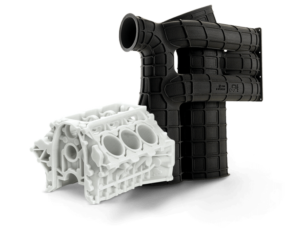Selective Laser Sintering (SLS) is a revolutionary technology that has transformed the way we create 3D objects. It uses lasers and powdered materials to build objects layer by layer, resulting in highly detailed and precise creations.
One of the key advantages of SLS is its ability to produce complex geometries that would be impossible with traditional manufacturing methods. This is because SLS does not require molds or tooling, which can limit the shapes and designs that can be created.
The process of SLS begins with a 3D model, which is then sliced into thin layers using specialized software. The powdered material is then spread across a build platform, and a laser is used to selectively fuse the material together, layer by layer, until the object is complete.
One of the most popular materials used in SLS is nylon, which is known for its strength, durability, and flexibility. However, other materials such as metal, ceramic, and glass can also be used, depending on the desired properties of the final object.
SLS is widely used in a variety of industries, including aerospace, automotive, and medical. In aerospace, SLS is used to create lightweight and durable parts for spacecraft and satellites. In automotive, SLS is used to create complex engine components and lightweight body parts. In medical, SLS is used to create custom prosthetics and implants.
Overall, SLS is a highly versatile and efficient manufacturing process that has revolutionized the way we create 3D objects. With its ability to produce complex geometries and a wide range of materials, SLS is poised to become an essential tool in the manufacturing industry.
For more information go to https://quickparts.com/


